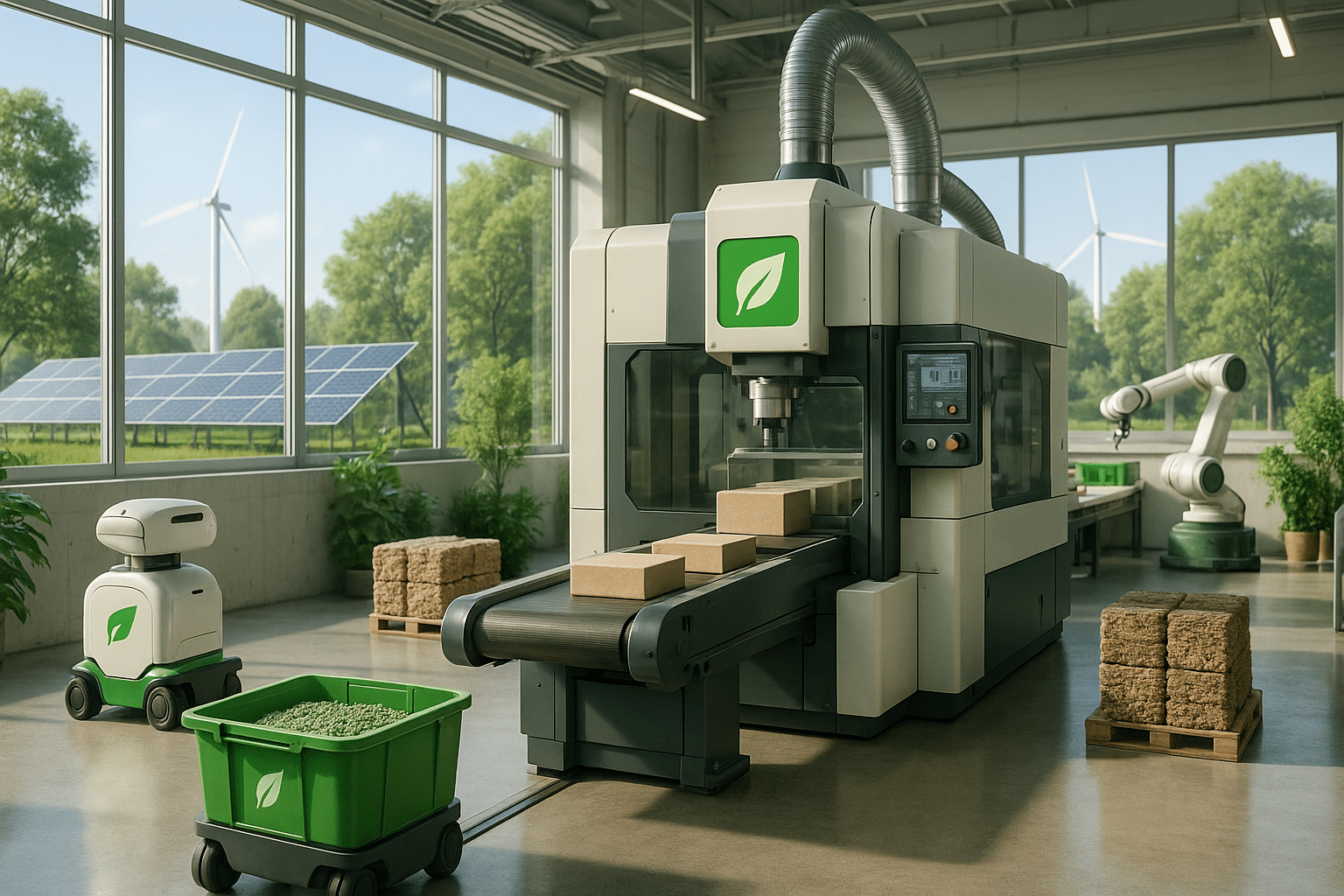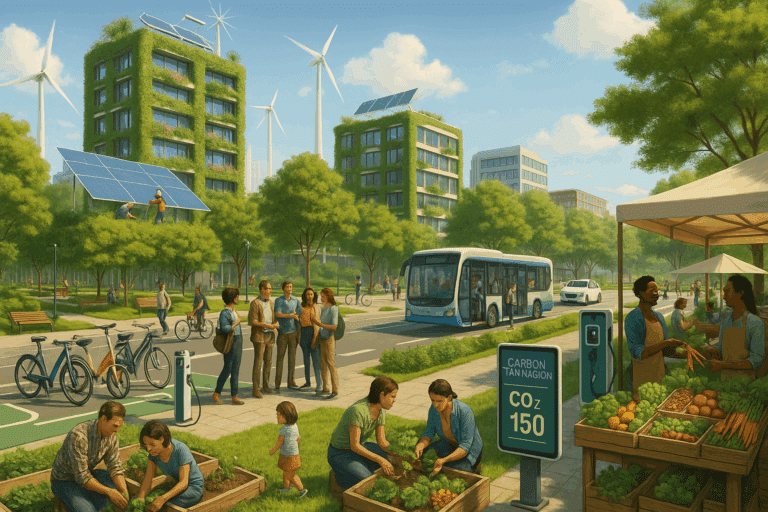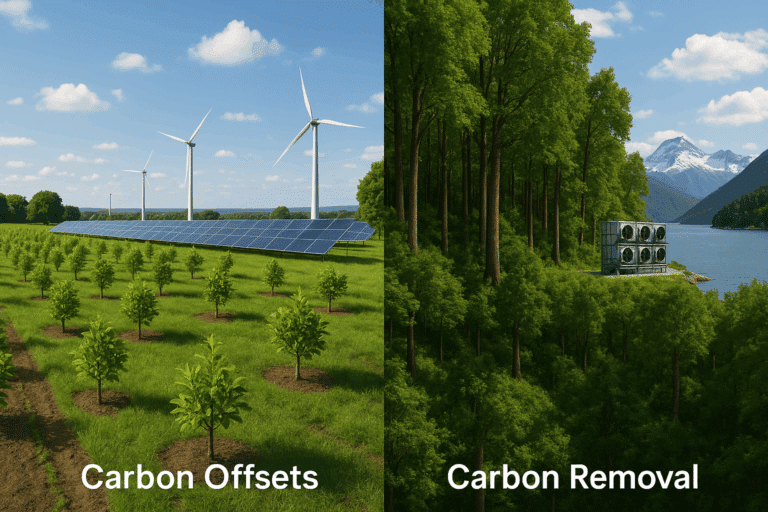🌍 That vision may seem far off, but it’s not as distant as you might think. Thanks to a cutting-edge concept called ‘decarbonization of the product lifecycle,’ this dream can become a reality.
But, what exactly is decarbonization, and how can it revolutionize sustainability? Decarbonization is the process of reducing or eliminating the carbon dioxide emissions produced in various stages of a product’s life cycle. This revolutionary idea promises a substantial reduction in our collective carbon footprint. It aims to transition us towards a more sustainable and carbon-neutral future.
By the end of this blog, you will understand the concept of decarbonizing the product lifecycle, its role in achieving sustainability, and how it’s paving the way for a greener future. 💡
Understanding the Concept of Decarbonization
Decarbonization is not a new concept, but it’s application in the product lifecycle represents a novel approach towards sustainability. The process begins right from the design phase, extends to the manufacturing, usage, and ends at the disposal stage. Through each step, the aim is to reduce or eliminate carbon emissions, creating products that are not just efficient and high-performing, but also environmentally friendly.
Role of Decarbonization in Sustainability
Adopting decarbonization in product lifecycle has a significant impact on sustainability. It means reimagining our existing manufacturing and disposal processes, innovating with materials and methods that produce less CO2, and creating a circular economy where waste is minimized.
The implications are far-reaching: from industries adopting greener manufacturing methods to consumers making conscious choices about the products they buy and use. This shift towards decarbonization not only helps in reducing carbon emissions but also fosters a culture of sustainability. 💚
Decarbonizing the Product Lifecycle: A Pathway to a Greener Future
Every product we use, whether it’s a smartphone, a car, or even a simple plastic bag, has a carbon footprint. By decarbonizing the product lifecycle, we can dramatically reduce these footprints, leading to significant environmental benefits. It’s not just about creating greener products; it’s about creating a greener future.
In the coming sections, we will delve deeper into how decarbonization is being applied in different sectors, the challenges it presents, and the strategies to overcome them. We will also explore case studies of companies who are leading the way in this space, setting a benchmark for others to follow. 🌱
It’s time to revolutionize the way we think about sustainability. The path to a greener future starts with decarbonization. So, buckle up and join us as we explore this fascinating concept, its potential, and how it can transform the world we live in. Stay tuned!
Embracing the Green Revolution: The Imperative of Product Lifecycle Decarbonization
As the world continues to grapple with the pressing issue of climate change, the concept of sustainability has become a mainstay in virtually every industry. The focus has increasingly turned towards decarbonizing the product lifecycle, a revolutionary approach towards achieving a greener future. But what does this entail? Let’s delve into it.
Decarbonization in the context of a product lifecycle refers to the systematic reduction or complete removal of carbon dioxide emissions produced at every stage of a product’s life – from extraction of raw materials, production, and usage, to disposal. This comprehensive approach seeks to ensure that the carbon footprint of products is kept at an absolute minimum, thereby contributing significantly to global efforts towards mitigating climate change.
The video below titled “The Carbon Footprint of Stuff” by TED-Ed provides a clear and concise explanation of the carbon footprint that products leave and the importance of decarbonization in their lifecycle.
“The Carbon Footprint of Stuff” by TED-Ed
The Carbon Emission Matrix: A Comparative Analysis
Understanding the carbon emission matrix of different industries is key to effectively decarbonizing the product lifecycle. It gives a clear picture of the carbon footprint associated with different stages of the product lifecycle in various industries, thus enabling targeted interventions.
Below is a comparative table that depicts the carbon emission matrix of some major industries:
| Industry | Raw Material Extraction | Production | Usage | Disposal |
|---|---|---|---|---|
| Automotive | High | High | Very High | Medium |
| Electronics | Medium | High | Medium | High |
| Textile | High | Medium | Low | Medium |
| Food and Beverage | Very High | Medium | Low | Medium |
By examining the table above, it becomes evident where interventions can be most effective. For instance, for the automotive industry, efforts should be concentrated on the usage stage, whereas in the food and beverage industry, focus should be placed on the raw material extraction stage.
Strategies for Decarbonizing the Product Lifecycle
Decarbonizing the product lifecycle requires the implementation of effective strategies aimed at minimizing carbon emissions at each stage. Here are some of these strategies:
- Eco-design: This involves designing products with consideration for the environmental impacts they will have throughout their lifecycle. It includes using renewable or recyclable materials, reducing energy consumption, and facilitating end-of-life recycling.
- Energy Efficiency: This involves optimizing processes to consume less energy at every stage of the product lifecycle, especially during production and usage.
- Recycling and Waste Management: This involves managing waste efficiently and promoting recycling at the end of the product’s life to reduce the carbon footprint associated with disposal.
Successfully implementing these strategies requires a thorough understanding of the product lifecycle, a commitment to sustainability, and an innovative mindset. It’s a journey worth undertaking, as it not only contributes to the fight against climate change but also leads to cost savings and increased customer loyalty in the long run.
Case Studies: Success Stories in Decarbonizing the Product Lifecycle
Several companies have successfully implemented strategies to decarbonize their product lifecycle, demonstrating that it is not only possible but also profitable. Here are a few examples:
- Tesla, Inc.: Tesla’s electric vehicles have revolutionized the automotive industry by significantly reducing carbon emissions during the usage stage. Moreover, the company is committed to using renewable energy in its production processes, further minimizing its carbon footprint.
- Patagonia, Inc.: This outdoor clothing company has integrated sustainability into its business model. From using recycled materials in its products to investing in renewable energy for its operations, Patagonia is a perfect example of decarbonization in the textile industry.
- Apple Inc.: Apple’s recent commitment to becoming 100% carbon neutral by 2030 involves reducing emissions through design and manufacturing, using renewable energy, and developing new carbon removal solutions.
These case studies serve as inspiration for other companies striving towards decarbonizing their product lifecycle. With concerted effort, innovation, and commitment to sustainability, decarbonization is an achievable goal.
Decarbonization: The Path Forward
Decarbonizing the product lifecycle is not a fad, but a necessity in our collective quest for a sustainable future. It requires not just effort and innovation, but also a shift in mindset from viewing sustainability as an add-on to embedding it in the very fabric of our operations.
The journey might be challenging, but the benefits are manifold. From cost savings and increased customer loyalty to contributing to the fight against climate change, the rewards are truly worth the effort.
So, let’s embrace the green revolution, and strive towards decarbonizing the product lifecycle for a greener, more sustainable future.

Conclusion
In this comprehensive guide, we’ve traveled a significant journey together, exploring the diverse and intricate realm of IT and engineering. As we reach the closing stages of our voyage, it’s crucial to pause and reflect on the vital points we’ve encountered along the way.
Over the course of this piece, we’ve seen how IT and engineering are interwoven into nearly every fabric of our daily lives. From the moment we wake up to the time we rest our heads at night, these disciplines play an integral part in our existence, shaping our world in ways we often overlook. 💻🏗️🌐
Firstly, we discovered how IT and engineering are foundational elements in the design, development, and implementation of technological systems. Whether it’s a computer network, a mobile app, or a skyscraper, the principles and methods of these fields come into play, guiding the process to ensure functionality, efficiency, and safety.
Next, we took a deep dive into some of the most prevalent technologies in our world today, understanding their underlying mechanisms and appreciating their contributions to society. These include artificial intelligence, blockchain technology, and Internet of Things (IoT), each with its unique characteristics and applications. 🤖⛓️🌍
We also discussed the societal implications of IT and engineering, focusing on their roles in economic development, environmental sustainability, and cybersecurity. As we realized, these disciplines are not just about creating fancy gadgets; they’re also about improving human lives, protecting our planet, and ensuring a secure digital world.
In addition to the knowledge and insights gained, we also recognized the importance of continual learning and staying updated in these rapidly evolving fields. As the saying goes, the only constant in technology is change, so it’s vital to remain adaptive, open-minded, and curious. 🎓📚🧠
Now, having reached the end of this journey, we trust you’re equipped with a deeper appreciation of IT and engineering and their pivotal roles in our world. However, the exploration doesn’t end here. The beauty of these disciplines lies in their boundless potential and the endless possibilities they offer. So keep questioning, keep learning, and most importantly, keep innovating.
We encourage you to share your thoughts, experiences, and insights in the comments section below. Let’s create a vibrant community of learners and innovators, driven by curiosity and a shared passion for technology and engineering. Share this guide with your peers and spread the knowledge! 🙌👨💻👩💻🌏
To delve further into these fascinating subjects, you may want to check out some of these resources:
– [MIT OpenCourseWare – Electrical Engineering and Computer Science](https://ocw.mit.edu/courses/electrical-engineering-and-computer-science/)
– [Stanford University – School of Engineering](https://engineering.stanford.edu/)
– [Google AI Hub](https://aihub.cloud.google.com/)
Thank you for joining us on this journey. Remember, in the world of IT and engineering, the sky is not the limit; it’s just the beginning. Stay inspired, stay informed, and keep pushing the boundaries of what’s possible.
Keep learning, keep growing, and most importantly, keep creating. After all, the future belongs to those who imagine it, design it, and build it. So go ahead, make your mark! 💡🚀🌌
Reference:
“MIT OpenCourseWare – Electrical Engineering and Computer Science”. ocw.mit.edu. Retrieved 2021-09-27.
“Stanford University – School of Engineering”. engineering.stanford.edu. Retrieved 2021-09-27.
“Google AI Hub”. aihub.cloud.google.com. Retrieved 2021-09-27.



